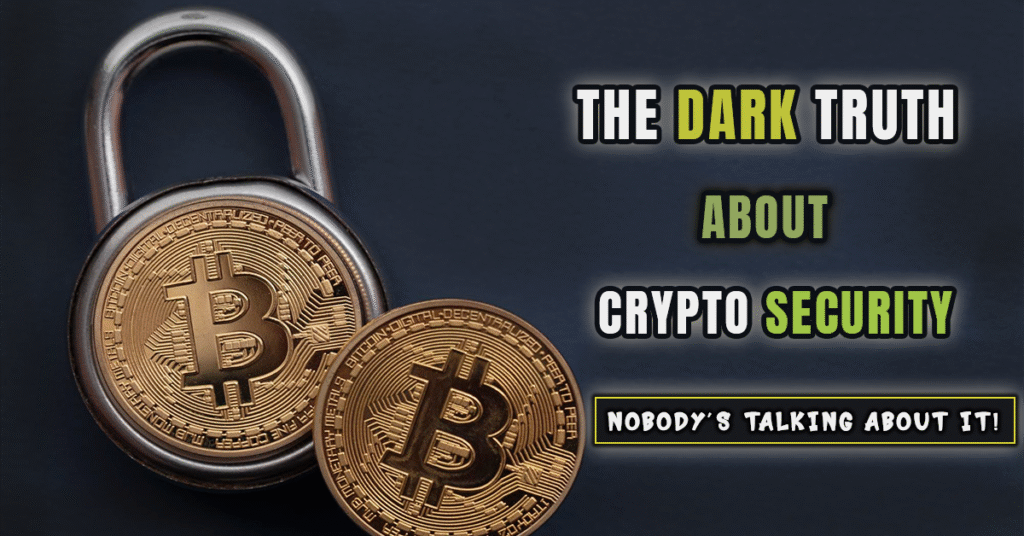
The cryptocurrency sector has devoured its time focusing on the misplaced threats it has had over the years, and the cracks are now starting to appear. Even as billions of dollars are spent on blockchain encryption, decentralised governance, and smart contract audits, the most dangerous weaknesses of the system, namely human error, centralised control, and lax regulation, are being left painfully exposed.
The recent series of well-publicized hacks, wallet-draining schemes, and insider frauds makes clear a very distressing reality, which is that crypto is not at its core the biggest threat, but rather it is the vibrant ecosystem.
The Illusion of Safety
For the past years, crypto companies have been telling people that the cryptography of blockchain cannot be broken. Principally, they are correct; the SHA-256 encryption of Bitcoin has never been broken. However, in reality, thanks to lost trust, users are losing billions, not due to broken code, but due to lost trust.
Since there is a rise in exchange hacks to phishing attacks, and rug pulls, the weaknesses of the chain lie in the weakest link of the chain, people. The fantasy of the so-called decentralised safety has enabled exchanges and DeFi platforms to exist with little to no consumer protection and accountability, and retail investors have stumbled into advanced traps in the belief that crypto is invincible.
A blockchain analyst at Chainalysis said the protocol level of crypto security is never violated. It is shattered at the human scale – of the way keys are kept, the way projects are managed, and how people are deceived.
Hundreds of millions wasted on the Wrong Wars
Multiple blockchain forensics reports indicate that more than 2.3 billion dollars of digital assets were stolen in 2024 alone in scams, through leaks of private keys, and in insider fraud. However, the majority of attention and investment in the industry is obsessed with the technical purity of code as opposed to the behavioural and systemic risks that are wallet-drainers in reality.
Claiming zero-knowledge proofs and multi-signature wallets but lacking basic operational security are common with crypto companies. Numerous DeFi protocols do not have strict governance controls. Custodial wallets become a source of power concentration, which is inconsistent with the spirit of decentralisation, and regulatory gaps allow exchanges to work in the dark jurisdictions.
Cybersecurity experts claimed that people are installing more advanced locks, but they are leaving the doors wide open.
The Empirical Risks: Psychology, Regulation and Centralisation
Though the centralisation rhetoric is in place, only a few centralised dealings are involved in most crypto trading volumes. Their failures, whether it is a mismanagement or an insider breach, are felt throughout the market. In the case of FTX, which went bankrupt in 2022, billions disappeared overnight, and the blockchain did not fail; rather, it was the governance that failed.
Furthermore, psychological weaknesses of investors, greed, FOMO and blind faith are constantly taken advantage of by launching fake tokens, pump and dump schemes, and deepfake influencers marketing scams.
The uncertainty in regulations makes the problem worse. Governments across the world are yet to come up with structures that can secure the users without suffocating innovation. This void provides space to play around and push propaganda where glamorous projects fly under the radar before it is too late.
The Security Paradox
Paradoxically, the more technologically safe crypto is, the more it appears that the users of it are relaxed. This security paradox contributes to the risk-taking behaviour because investors think that decentralized is safe. However, decentralisation without discipline is equally harmful as centralization without control.
A security researcher at the University of Cambridge said that Crypto must change to stop being an issue of technical arrogance and transform into a human one. It is not whether the code is safe, it’s whether the people who use the code are.
The Way Forward
There is a call by experts that the industry should change its focus, stop being code-centred and should be culture-based (encryption and education, respectively). It implies the development of a user-friendly security infrastructure, the establishment of an open administration and focusing on user literacy rather than hype.
Multi-factor authentication, decentralised identity checking, and instant fraud detection should not be a luxury; they need to be part of the package. In the meantime, investors should be made to remember that responsibility in the digital era is not programmable, but personal.
Until that occurs, crypto will keep taking the wrong fights, supporting the invincible to the detriment of the inevitable.
Conclusion
Financial freedom was the promise of crypto – but freedom without responsibility brings about disorder. The most significant challenge that the industry will encounter as digital assets enter the mainstream financial sector is not securing its code, but securing its individuals.`
To this day, there is one fact that cannot be avoided: crypto security does not get compromised due to what it is afraid of; it does not get compromised because of what it does not even care about.
A digital marketer possessing excellent knowledge and skill in off-page, on page and local SEO is competent in the challenging environment. Hard-working, energetic, and a quick learner for any task delegated. Enthusiastic to learn and constantly upgrade knowledge. Mohit brings over 2 years of experience in crafting content that not only ranks well but also provides valuable insights to readers.

